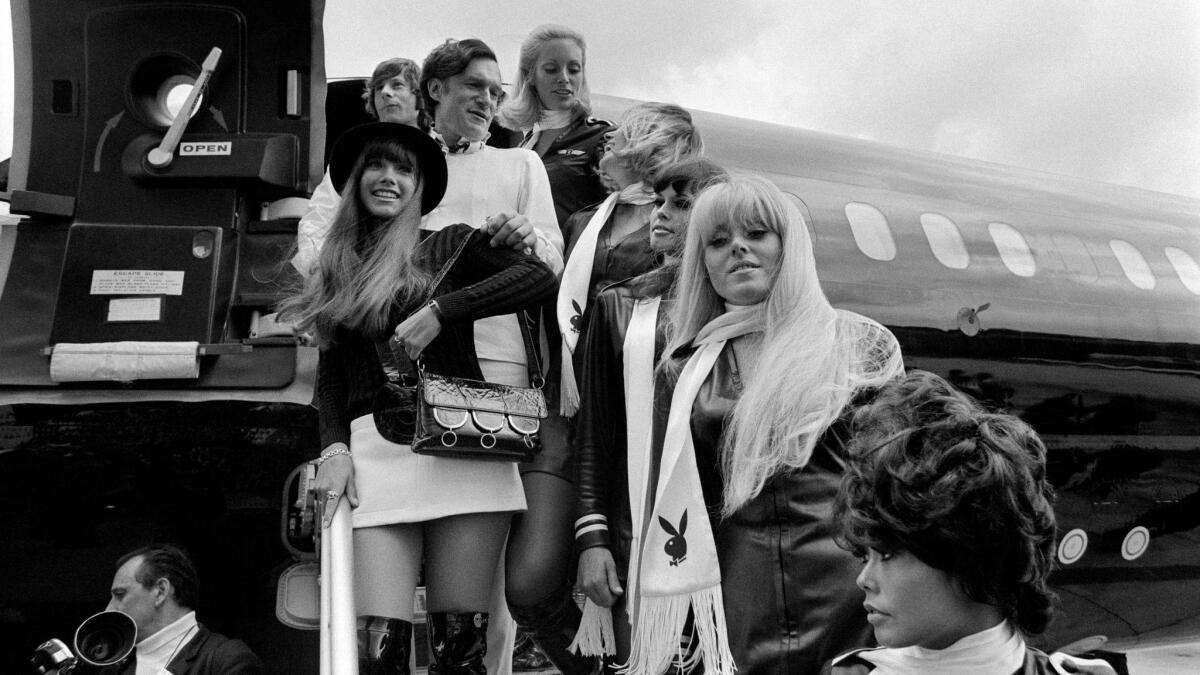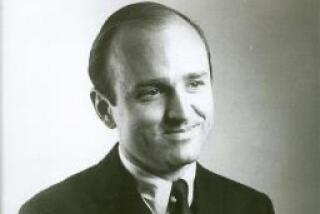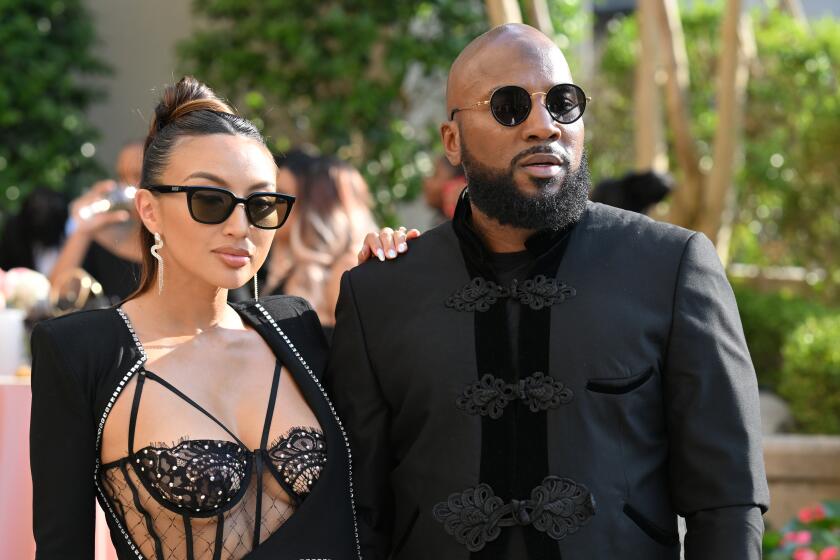Hugh Hefner’s ‘Playboy After Dark’ was in tune with pop music’s eccentricities

Hugh Hefner’s short-lived 1969-70 talk show, “Playboy After Dark,” ran for only two seasons, but it had a great ear for music.
The Playboy Production, filmed on the CBS lot and at KTLA, featured Hefner, who died Wednesday at 91, in conversation with actors, celebrities and comedians including comedian Moms Mabley, Patti Duke, NBA star Bill Russell and filmmaker Otto Preminger.
At that moment Playboy was a high-flying enterprise with a magazine, nightclubs and a rising reputation as a cultural tastemaker. The brand appeared to be dialed into the pop-culture pulse, and the roster for “Playboy After Dark” bears that out.
The show booked an upstart comedy group called the Second City, offering early exposure to Harold Ramis, Brian Doyle-Murray, Joe Flaherty and others. Musically, across the two seasons Hefner and musical director Tommy Oliver booked a stellar roster of artists, including Ike & Tina Turner, Iron Butterfly, Linda Ronstadt, James Brown, the Byrds (with Gram Parsons), Sarah Vaughn, Billy Eckstine, the Sir Douglas Quintet and Deep Purple.
Formatted like a Playboy mansion cocktail party, the syndicated show was presented as if viewers were invited guests. Wearing a tuxedo, smoking a pipe and martini in hand, Hefner would welcome you into his space.
On March 22, 1969, the Grateful Dead appeared on a show that also featured comedian Sid Caesar and astrologer Sydney Omarr.
According to Dead drummer Bill Kreutzmann during an interview on “Conan,” the band had brought along their friend the famed LSD chemist Stanley Owsley, who promptly dosed the “Playboy After Dark” staff coffee pot during pre-production.
The story, if actually true, adds another dimension to the interview that followed. Standing at a bar with Dead guitarist Jerry Garcia, who’s wearing a hippie poncho, the ever-composed Hefner looks around the room and notes the band’s setup. (The clip is unavailable on YouTube but can be found on Vimeo.)
“You’ve got kind of a stereo effect going on here with the drums — two complete sets of drums and two drummers, um, obviously for a purpose,” Hefner says.
Replies Garcia: “Right. Mutual annihilation.”
“I see,” Hefner says. “So the guys kind of compete with one another?”
Garcia: “Well, more they chase each other around. It’s like the serpent that eats its own tail, you know? And it goes round and round like that. And if you could stand in between them, they make big figure-eights on their sides in your head.”
Deadpans Hefner: “I don’t think I want to stand between them.”
The publisher then gestures over to the stage and asks the Dead to play a few songs, which they do: a gentle take on “Mountains of the Moon” and a raucous, tripped out version of “Saint Stephen.”
The band concludes, the room erupts in applause and the camera cuts to Hefner. Staring into the camera as if he’s showing you to the door, he says, “Well, if your life is going around in circles like that infernal machine, the only solution is to join us here next week, same time.”
Recalled Kreutzmann to Conan O’Brien: “We did the show, and then [bassist] Phil Lesh and I were walking out through the big door, and here’s Hefner. He’s like this [Kreutzmann stands like a statue] frozen against the wall. ‘Thank you, guys.’”
Other sets were less lysergic. Ike & Tina Turner burned through the makeshift mansion’s so-called Ruckus Room during an episode broadcast in early 1970.
Ike’s wearing a moptop wig and a wide-lapel gold suit, and Tina’s wearing a spangled gold dress that shimmers when she dances. The team powers through four covers of then-recent songs: Sly & the Family Stone’s “Higher,” the Beatles’ “Come Together,” Creedence Clearwater Revival’s “Rollin’ on the River” and “Honky Tonk Woman” by the Rolling Stones.
When Linda Ronstadt performed a few episodes later, Hefner introduced her as “a good friend” while sitting on some stairs with various beautiful women. “Would you like to hear some country music,” he asked. Their reply was a solid “No!”
Laughing, he directed them toward the stage to identify “one of the great, great talents in country music.” (The footage also shows a young Lindsay Wagner among the crowd.)
A fresh-faced Harry Nilsson appeared in early 1969 alongside director Preminger to chitchat with Hefner and some bunnies. Also on the show was impersonator Rich Little and playmate (and frequent Hefner date) Barbi Benton.
The pipe-smoking Hefner was a vocal jazz and blues fan, and the show’s bookings reflected that. Across the episodes he hosted Julian Edwin “Cannonball” Adderley’s quintet, the Modern Jazz Quartet, drummer Buddy Rich, blues guitarist B.B. King, R&B singer O.C. Smith and future Jimi Hendrix collaborator Buddy Miles.
Whatever the scene, Hefner looks like both the squarest and the suavest man in the room.
When the British proto-metal band Deep Purple was on the show, the act gave Hefner one of their hollow-body electric guitars.
With a pipe in his mouth, Hefner then struck a chord, which resonated and wobbled as he bent his whammy bar like a pro.
For tips, records, snapshots and stories on Los Angeles music culture, follow Randall Roberts on Twitter and Instagram: @liledit. Email: randall.roberts@latimes.com.
UPDATES:
3:51 p.m. This post was updated with details about additional episodes.
More to Read
The biggest entertainment stories
Get our big stories about Hollywood, film, television, music, arts, culture and more right in your inbox as soon as they publish.
You may occasionally receive promotional content from the Los Angeles Times.







